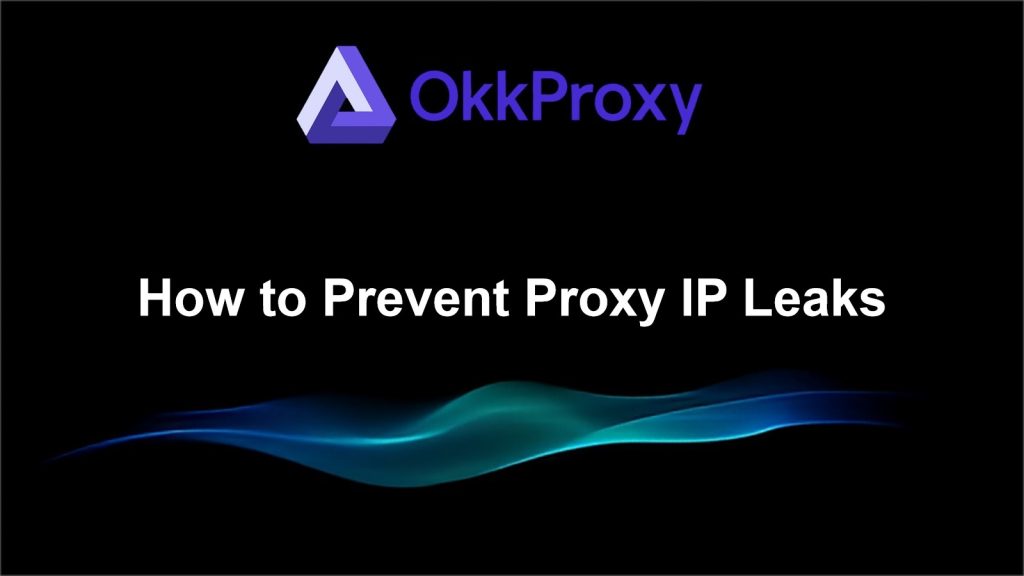1. What Is an IP Leak?
An IP leak occurs when your real IP address is exposed despite using a proxy or VPN.
Instead of masking your location, some requests accidentally bypass the encrypted tunnel.
Common leak types include:
- WebRTC Leak – Browser’s peer-to-peer communication exposes your real IP
- DNS Leak – Domain lookups go directly through your ISP instead of the proxy
- IPv6 Leak – When a proxy doesn’t support IPv6 and your OS sends unencrypted IPv6 traffic
2. Why Do IP Leaks Happen?
- WebRTC not disabled in the browser
- DNS requests are not routed via proxy
- Proxy provider lacks DNS leak protection
- IPv6 remains enabled on the system
- Browser extensions or cookies expose hidden identifiers
3. Practical Steps to Prevent IP Leaks

✅ Disable WebRTC
Turn off WebRTC or install browser plugins to prevent peer-to-peer IP exposure.
✅ Enable DNS Leak Protection
Use DNS-over-HTTPS (DoH) and ensure all DNS queries are sent through your proxy.
✅ Disable IPv6 or Enable Protection
If your proxy doesn’t support IPv6, disable it at the OS level to prevent direct traffic leaks.
✅ Use VPN + Proxy Combo
Combine VPN encryption with residential proxies for layered protection against DNS and WebRTC leaks.
✅ Regularly Test for Leaks
Check your setup using tools like BrowserLeaks.org or IPLeak.net.
✅ Configure Browser & System Properly
Avoid extensions that bypass proxies; align cookies, referers, and browser fingerprints.
4. Leak Prevention Checklist
| Category | Recommended Action |
|---|---|
| WebRTC | Disable completely or use a plugin |
| DNS | Use DoH and proxy-forwarded DNS requests |
| IPv6 | Disable if unsupported |
| VPN Combo | Use VPN + Proxy for high-security tasks |
| Regular Tests | BrowserLeaks / IPLeak checks |
| Browser Setup | Avoid extensions that bypass proxy routes |
5. Why It Matters
Even premium residential proxies like OKKProxy can’t protect you if misconfigured.
An IP leak exposes your real location and identity — potentially leading to bans or blocked sessions.
In scraping, SEO monitoring, or ad verification, this can completely disrupt your workflow.
6. Final Recommendation
- Choose a trusted provider with built-in DNS leak protection.
- Combine VPN + residential proxy for double security.
- Automate leak checks regularly.
Try OKKProxy:
Global residential IPs, dynamic & static switching, DNS protection, and API integration — designed for safe, anonymous, and high-performance operations.
